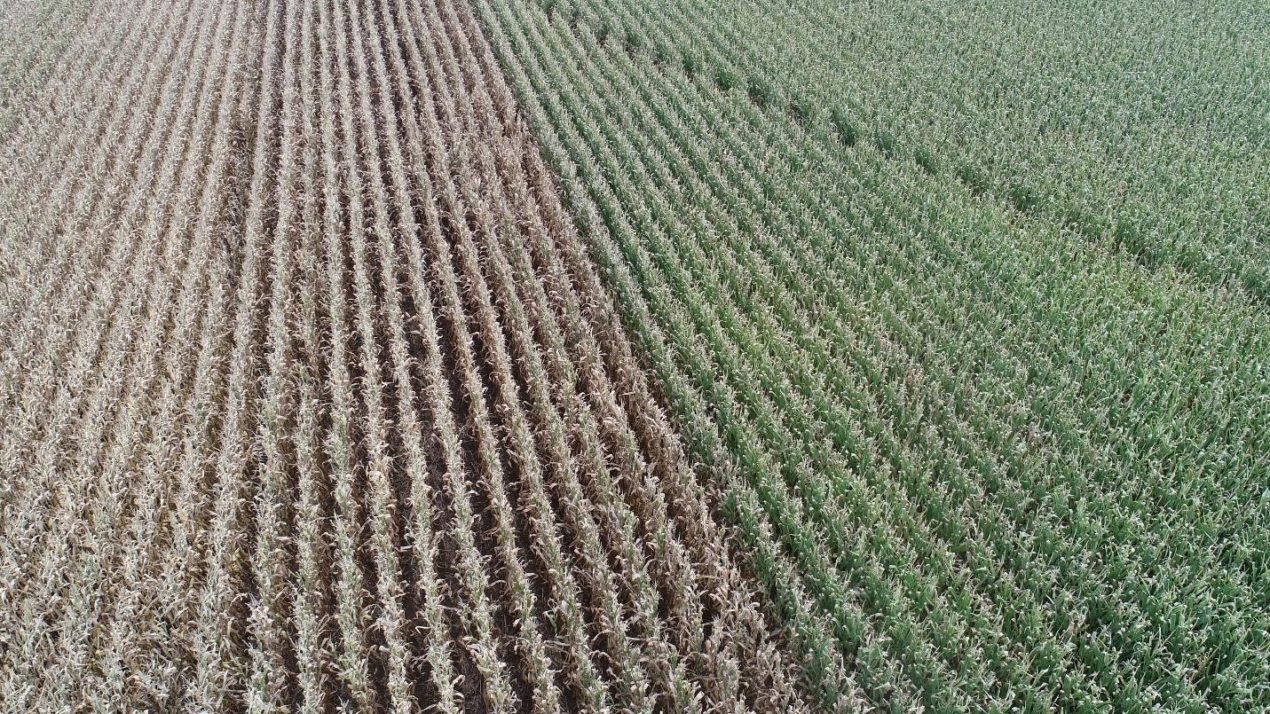
The following article is presented to you by Pioneer. It was written by Scott Rowntree, M.S., C.C.A. – Pioneer Field Agronomist
Tar Spot (Phyllachora maydis) is the newest fungal pathogen of corn in the US and was first found in Wisconsin just four years ago. Tar Spot was initially thought to only cause cosmetic damage but not yield loss. In August 2018, however, Southern Wisconsin became the epicenter of a multi-state Tar Spot outbreak that resulted in rapid canopy infection and death of entire corn fields in just 7-14 days, causing severe yield loss (25-50+%) in more susceptible hybrids. Yes, certain fields in Southern WI experienced over 100 bu/ac yield losses due to this disease! During the 2019 & 2020 growing seasons, Pioneer Field Agronomists have continued to monitor the spread of Tar Spot in the state and conducted field trials to learn how to successfully manage the disease to help growers combat this potentially very destructive pathogen.
Tar Spot is easily identifiable by its unique set of symptoms. The disease produces small black specks (also known as stroma), that as the name suggests, look like tar was finely sprayed across the leaf and other plant surfaces. Tar spot stroma are fairly round at initial lesion infection, dull black in color, slightly raised from the leaf surface, and cannot be rubbed off of the leaf surface. There are look alikes, like insect droppings, which are often shiny black and small, but these can easily be rubbed off of the leaf surface with water or saliva. As the disease progresses over time, the stroma multiply, grow larger, move up the plant and above the ear leaf, and causes large plant tissue death. This tissue death decreases photosynthetic “solar panel” area, which can quickly cause yield loss, depending on timing.
Last year, every field of corn that I walked in Southern Wisconsin at maturity had Tar Spot present, but generally at low levels of severity with minimal impacts on yield. This goes to show that no hybrid in the seed corn industry is totally resistant to Tar Spot, regardless of what a seed salesman might tell you! There is however, an extremely wide range of hybrid susceptibility to Tar Spot across seed corn brands (Figure 1), which has been well-documented by Dr. Damon Smith at UW-Madison and the Pioneer Field Agronomy Team, so hybrid tolerance to Tar Spot should be a selection criteria when deciding which hybrids to plant the following year. Fungicides can also be very effective at helping to manage this disease, but correct type of fungicide and timing are critical to achieve adequate control.
For more details on how to identify and control Tar Spot in your corn field, please join us for Pioneer Agronomy Hour, a virtual educational agronomy event hosted by Pam Jahnke on March 16th with the Mid-West Farm Report where we will discuss Tar Spot further.

